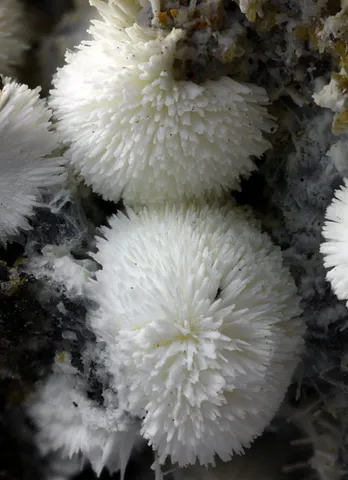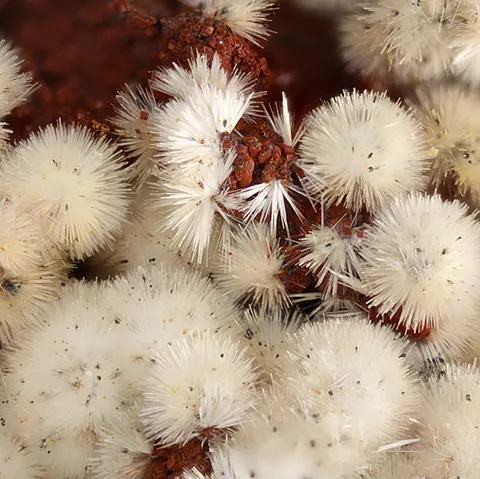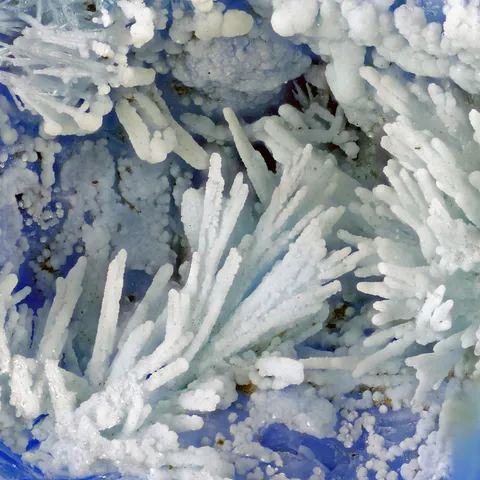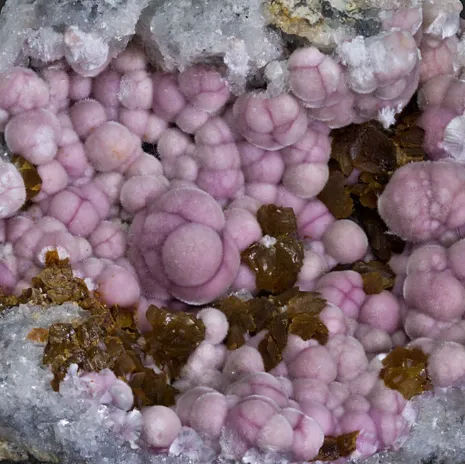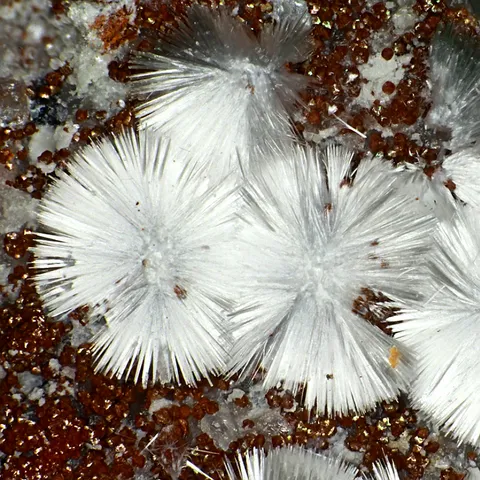ALUMOHYDROCALCITE
Class : Carbonates, Nitrates, Borates
Subclass : Hydrous carbonates
Crystal System : Triclinic
Chemistry : CaAl2(CO3)2(OH)4 3H2O
Rarity : Uncommon
Alumohydrocalcite is a hydrated carbonate of calcium and aluminum which forms chalky masses composed of fibrous crystals, white to pale blue, sometimes more intense blue, or greyish-green to olive-green, it is also frequently encountered in small millimetric spherolites. It owes its name to its chemical composition. It is a carbonated medium mineral whose formation seems to adapt to various conditions : alteration of allophane or dolomite, xenoliths of basic lava, etc...
The photo shows alumohydrocalcite pompoms from the Graulay basalt quarry (Germany) - Photo © Matteo Chinellato.
Alumohydrocalcite in the World
Twinning
No twin known for this mineral species.
Fakes and treatments
No fake reported for this mineral species, but can easily be confused with other species of the same habitus.
Hardness : 2,5
Density : 2.2
Fracture : Irregular
Trace : White
TP : Opaque to transparent
RI : 1.485 to 1.585
Birefringence : 0,085
Optical character : Biaxial -
Pleochroism : None
Fluorescence : None
Solubility : Hydrochloric and nitric acid
Magnetism : None
Radioactivity : None

